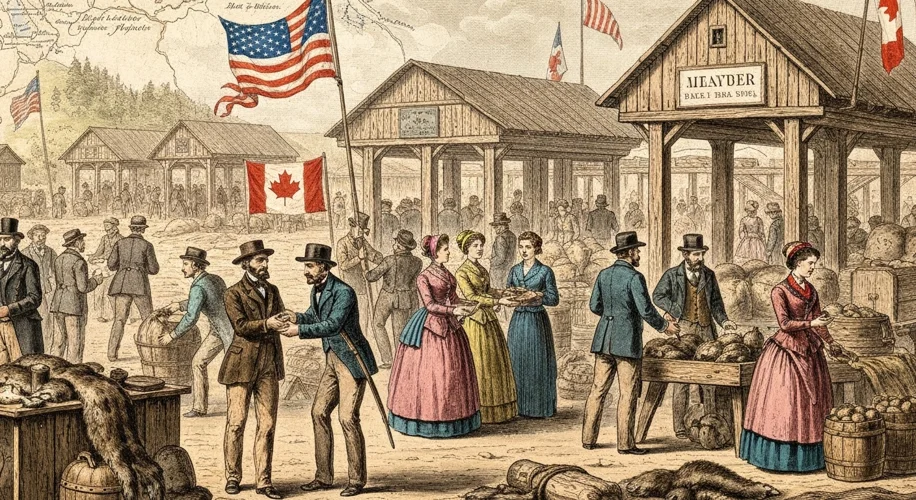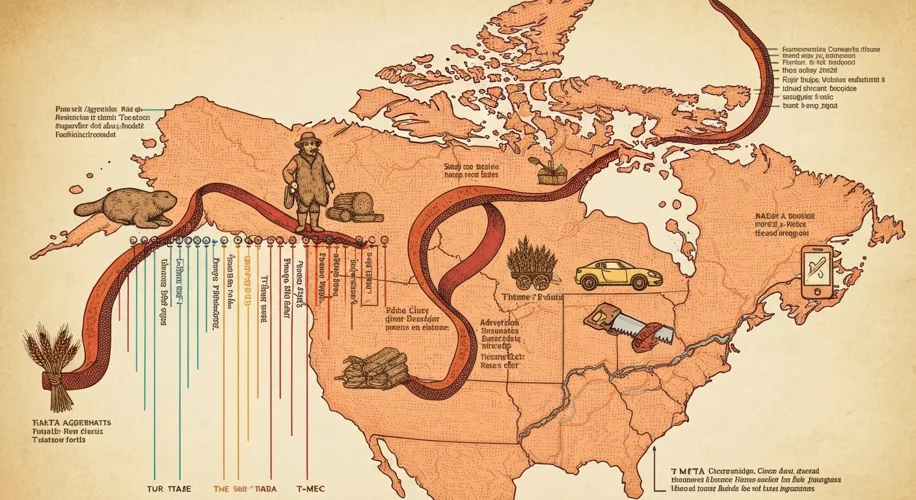The story of the United States and Canada is often painted as one of neighborly affection, a peaceful coexistence on the world’s longest undefended border. Yet, beneath this placid surface lies a relationship as complex and dynamic as any in global history, particularly when it comes to the intricate dance of trade. For centuries, these two North American giants have been inextricably linked, their economic destinies woven together by rivers, railways, and a shared continent. It’s a tale of cooperation, competition, and the occasional, rather dramatic, trade dispute.
From the earliest days of colonial settlement, the economies of what would become Canada and the United States were intertwined. The fur trade, a cornerstone of early North American commerce, saw American colonists and their Canadian counterparts (often French or British subjects) vying for the same pelts, creating a natural, albeit sometimes contentious, economic nexus. As the 19th century dawned, with the United States expanding westward and Canada solidifying its dominion, the need for open borders and reciprocal trade became increasingly apparent.
One of the most significant early attempts to formalize this relationship was the Reciprocity Treaty of 1854. This groundbreaking agreement, signed by the United States and the Province of Canada (which included present-day Ontario and Quebec), as well as New Brunswick, Nova Scotia, and Prince Edward Island, aimed to eliminate tariffs on a wide range of natural products, including timber, grain, and fish. For a decade, it fostered a boom in cross-border trade, demonstrating the mutual benefits of economic integration. American loggers could access Canadian timber, and Canadian farmers found a vast market in the burgeoning American cities. It was a period of relative economic harmony, a testament to what open trade could achieve.

However, this harmonious chapter was not destined to last. The American Civil War and its aftermath brought protectionist sentiments to the forefront in the United States. Fearing that reciprocity would harm American industries, the U.S. unilaterally abrogated the treaty in 1866. This abrupt end sent shockwaves through Canadian politics and economics, fostering a sense of economic vulnerability and fueling the desire for greater self-sufficiency and national unity. It was a stark reminder that the relationship, while economically beneficial, was always subject to the political winds blowing from Washington.
The late 19th and early 20th centuries saw Canada increasingly forge its own industrial path, though trade with its southern neighbor remained crucial. While formal, comprehensive trade agreements were scarce, a de facto economic zone continued to develop, facilitated by infrastructure like railways and the growing St. Lawrence Seaway. Still, periods of protectionism on both sides of the border periodically hampered the flow of goods and spurred debates about national economic sovereignty.
The mid-20th century brought a new era of dialogue. The automotive industry, in particular, became a focal point of cross-border cooperation. The Canada-United States Automotive Products Agreement, or the Auto Pact, signed in 1965, eliminated tariffs on new vehicles and parts between the two countries. This landmark agreement was a resounding success, creating a highly integrated North American auto industry that boosted production, lowered costs, and made both countries major players in the global market. It was a prime example of how targeted trade liberalization could create powerful, mutually beneficial economic engines.
But the late 20th century also presented challenges. As the global economy became more interconnected, the desire for a more comprehensive and robust trade framework grew. This culminated in the negotiation and signing of the Canada-United States Free Trade Agreement (CUSFTA) in 1989. CUSFTA aimed to eliminate most remaining tariffs and reduce other barriers to trade, creating a vast, unified North American market. It was a bold step, expanding on the principles of reciprocity and integration, and setting the stage for what was to come.
The successor to CUSFTA, the North American Free Trade Agreement (NAFTA), signed in 1994, brought Mexico into the fold, creating a trilateral trade bloc. NAFTA had a profound impact on the economies of all three nations, streamlining trade, promoting investment, and fostering complex supply chains. While debates about its effects on jobs and wages continue, NAFTA undeniably reshaped the economic landscape of North America for over two decades.

In recent years, the trade relationship has continued to evolve. NAFTA was renegotiated and replaced by the United States-Mexico-Canada Agreement (USMCA) in 2020. This updated agreement addressed new economic realities, including digital trade, intellectual property, and labor standards, while maintaining the core principles of free trade. However, the period leading up to and following the USMCA’s implementation has also seen renewed tensions. Disputes over softwood lumber, dairy products, and the use of tariffs have periodically strained the relationship, highlighting the persistent challenges in managing such a vast and interconnected trade network.
The history of US-Canada trade relations is not merely a chronicle of agreements and disputes; it is a testament to the enduring power of economic interdependence. From the fur traders of centuries past to the high-tech industries of today, the flow of goods, services, and capital across the 49th parallel has shaped the prosperity and identity of both nations. It’s a relationship that, despite its complexities and occasional friction, continues to be a cornerstone of North American economic stability and global trade.

